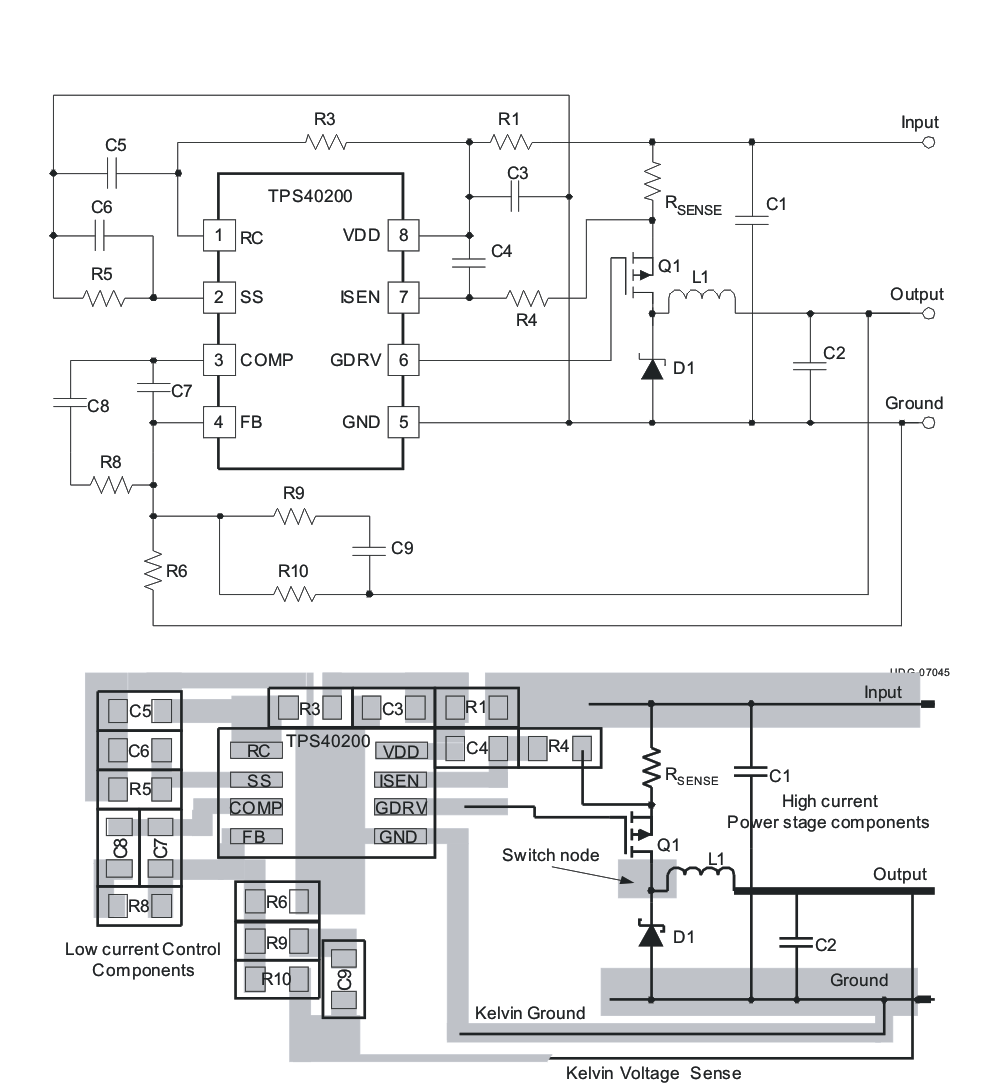SLUS739F September 2006 – January 2016 TPS40200-Q1
PRODUCTION DATA.
- 1 Features
- 2 Applications
- 3 Description
- 4 Revision History
- 5 Pin Configuration and Functions
- 6 Specifications
- 7 Detailed Description
-
8 Application and Implementation
- 8.1 Application Information
- 8.2
Typical Applications
- 8.2.1
Buck Regulator, 8-V to 12-V Input, 3.3-V or 5-V Output at 2.5 A
- 8.2.1.1 Design Requirements
- 8.2.1.2 Detailed Design Procedure
- 8.2.1.3 Application Curves
- 8.2.2 Application 2: 18-V to 50-V Input, 16-V Output at 1 A
- 8.2.3 Application 3: Wide-Input-Voltage LED Constant-Current Driver
- 8.2.1
Buck Regulator, 8-V to 12-V Input, 3.3-V or 5-V Output at 2.5 A
- 9 Power Supply Recommendations
- 10Layout
- 11Device and Documentation Support
- 12Mechanical, Packaging, and Orderable Information
Package Options
Mechanical Data (Package|Pins)
- D|8
Thermal pad, mechanical data (Package|Pins)
Orderable Information
10 Layout
10.1 Layout Guidelines
- Keep AC current loops as short as possible. For the maximum effectiveness from C3, place it near the VDD pin of the controller and design the input AC loop consisting of C1-RSENSE-Q1-D1 to be as short as possible. Excessive high-frequency noise on VDD during switching degrades overall regulation as the load increases.
- The output loop A (D1-L1-C2) should also be kept as small as possible. Otherwise, the output noise performance of the application will be degraded.
- TI recommends that traces carrying large AC currents not be connected through a ground plane. Instead, use PCB traces on the top layer to conduct the AC current, and use the ground plane as a noise shield. Split the ground plane as necessary to keep noise away from the TPS40200-Q1 and noise-sensitive areas, such as feedback resistors R6 and R10.
- Keep the SW node as physically small as possible to minimize parasitic capacitance and to minimize radiated emissions.
- For good output-voltage regulation, Kelvin connections should be brought from the load to R6 and R10.
- The trace from the R6-R10 junction to the TPS40200-Q1 should be short and kept away from any noise source, such as the SW node.
- The gate drive trace should be as close to the power FET gate as possible.
The TPS40200-Q1 is encapsulated in a standard plastic SOIC-8 package.
10.2 Layout Example
 Figure 46. PCB Layout Recommendations
Figure 46. PCB Layout Recommendations